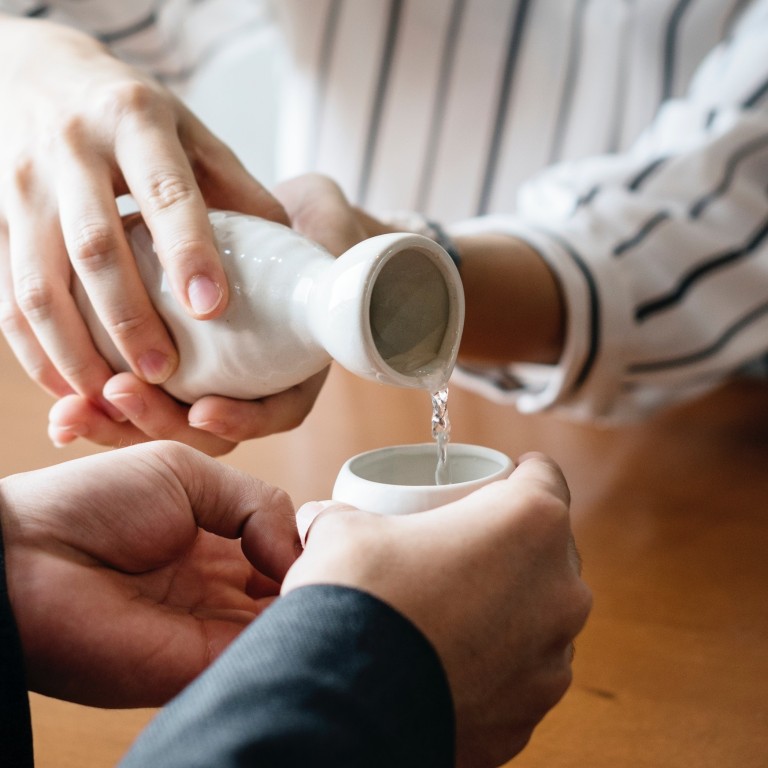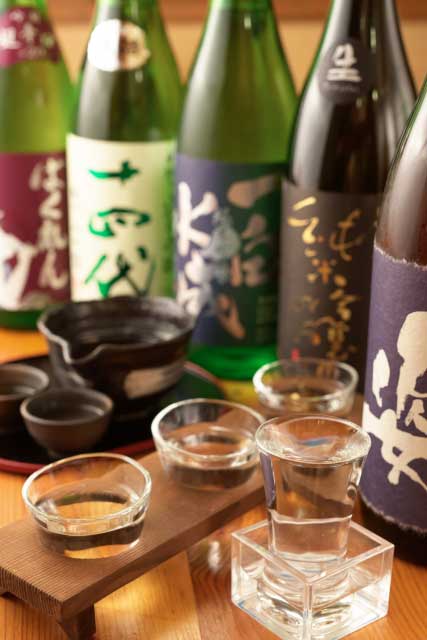Think the best way to drink sake is to shoot it? Think again.

Sake is a refined beverage with a rich history, and there is a traditional way to drink it. If you want to get the most out of traditional Japanese fare, then learn how to drink sake the right way and avoid looking like a newbie.
Sake has a unique taste and fragrance, and it’s different from any other drink out there. While sake comes in a wide variety of flavors like beer or wine, the experience of drinking sake is something else entirely.
If you’re new to drinking sake, you’ll probably need to try different types of it before you find one that you prefer. You might even be feeling overwhelmed, or confused by the variety of sake choices and don’t know the best way to drink it. Not only does sake taste, smell, and look different than any other drink, there’s a specific way you’re supposed to drink it to get the most out of the finish.

Before you order a bottle of sake as an excellent accompaniment to your sushi dinner, you have to know how to consume it correctly. Below, we’ll explain how to drink sake the right way so you can get the most out of the experience and avoid looking like a novice while you’re at it.
1. Pronounce Sake the Right Way
Don’t make a fool of yourself when you go to order sake. Make sure you get the name right so you can start off on the right foot when drinking this ceremonial beverage. The correct way to pronounce it is ‘sa-keh,’ not ‘sa-kee.’
2. Don’t Drink Sake Like a Shot
Sake is a ceremonial drink and a cultural pastime in Japan. As such, there is a way to imbibe respectfully. Sake is served in small drinking cups that are called ‘guinomi’ or ‘choko.’ Never take it down like a tequila slammer. Not only will you look silly to the seasoned sake drinker, but you won’t get the full effect of the drink, either. Sake has been refined throughout several hundred years worth of brewing to be best enjoyed sipped like you would a glass of tea or fine wine.
3. Find Your Flavor
In the same way that wine can be dry or sweet, sake also comes in different flavors. The sugar-to-acid level of sake is known as the Sake Meter Value or SMV. In Japanese, the SMV is called ‘nihonshu-do.’ A low SMV of -2 indicates a sweet sake drink, while a +5 would be dry. You’ll probably have to try out different levels of sake SMV to find you can enjoy. Since you’re supposed to sip the drink, having to endure one that’s either too dry or too sweet for your tastes can be miserable. Experiment a bit, so you know which SMV level to order like a pro.
4. Know Your Sake Names
As if learning to drink sake wasn’t complicated (but oh so worth it) enough, there are different types of sake. Just like there are dozens of different wines such as Riesling or Cabernet, sake also comes in a variety of flavors, SMV levels, and finishes. If you want to avoid looking like a newb, you’ll want to know your sake names before you order.
If you’re new to sake drinking, avoid ‘Koshu’ sake. It has a strong, rough taste. You’d also better steer clear of low-grade ‘Futsu Shu,’ unless you’re a masochist who only feels alive during a bad hangover.
What’s a good sake choice for novices and seasoned drinkers alike? ‘Namazake’ is a fresh, unpasteurized sake with a fruity taste. And you can never go wrong with ‘Junmai,’ a premium sake that is usually smooth and therefore, easier to drink.
5. Try it Hot or Cold
Although sake is usually served warm, it’s also quite good either chilled, at room temperature, or hot. Cheaper sake is often warmed to disguise its low grade, and premium sake is served chilled. Again, this is something you’ll probably want to experiment with. If you find a sake with an SMV you enjoy, you might prefer it at different serving temperatures. Unlike wines and beers, sake is a versatile beverage, and you can have a lot of fun experimenting with the different ways to drink it.
6. Drink it with Appetizers
Traditionally, sake is best enjoyed during the appetizer phase of the meal, or during tapas-style dining called ‘izakaya.’ You may even enjoy sipping sake with light sushi options such as sashimi or nigiri. Different sakes can bring out the flavors in the appetizers and make the meal even more enjoyable and memorable.
7. Don’t Serve Yourself
If you’re drinking sake with your friends or colleagues, never serve yourself. In Japanese culture, it’s customary for diners to pour for one another. When someone is pouring your sake, it is polite to lift your cup toward them slightly. The same goes if you want a refill. And don’t forget to return the favor and pour for your fellow diners. You’ll want to get this part of the custom correct, or at best you’ll look like a novice, and at worst you may appear rude.
8. Say Cheers!
Once everyone has been served, it’s customary for everyone to raise their sake cups for a toast. The traditional word for ‘cheers’ in Japanese is ‘Kanpai.’ Say it while gently touching the sake cups together before taking your first sip.